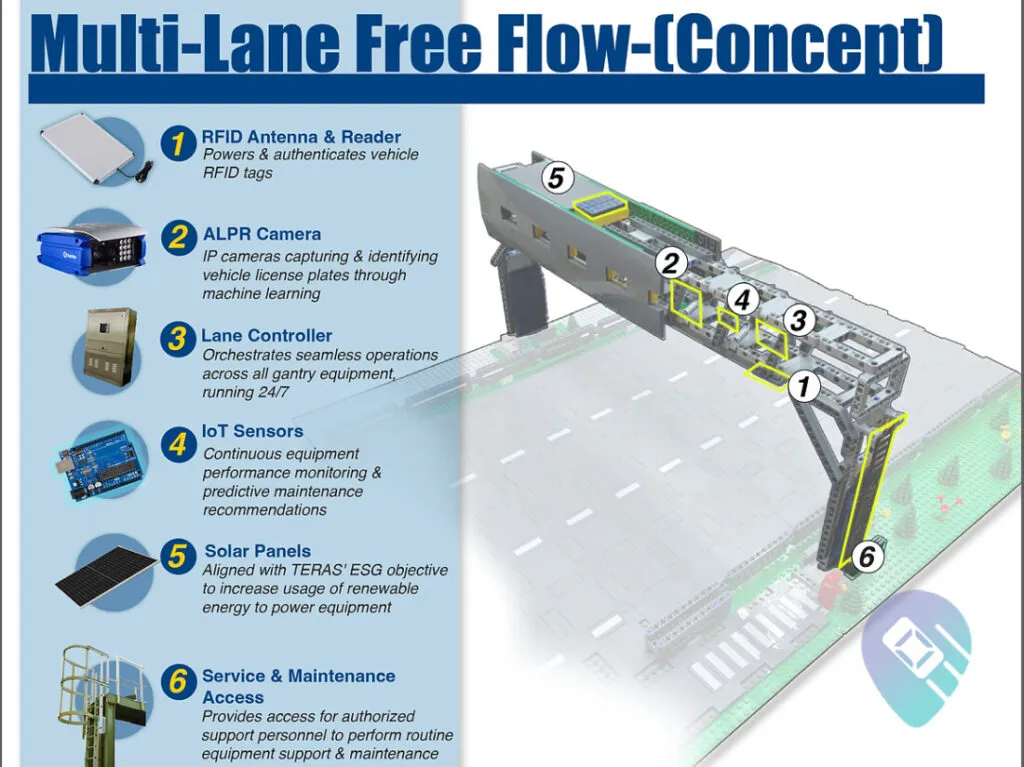1. Banks to Manage Toll Collection
For the first time, NHAI will partner with a bank to handle toll collection on a specific stretch of highway. This bank, known as the “acquirer bank,” will be chosen through a bidding process, with the bank offering the highest revenue share with NHAI winning the bid. For this project, the chosen stretch is the Dwarka Expressway. The bank will manage toll collection, and if it lacks experience in this area, it can hire specialized agencies to handle the toll operations.

2. How Multi-Lane Free Flow Tolling Works
The MLFF system is a modern setup without any toll booths. Instead, it relies on high-tech sensors and cameras mounted on overhead structures (gantries) along the highway. Here’s how it works:
- Data Capture on Gantries: As vehicles pass under these gantries, the sensors and cameras record data like the vehicle’s registration number and type.
- Automatic Fee Deduction with Fastag: The system reads the vehicle’s Fastag, and the toll fee is automatically deducted from the driver’s Fastag wallet. This allows the driver to keep moving without stopping or slowing down.
- Real-Time Processing: The data is immediately sent to the electronic toll system, which deducts the fee in real-time.
3. Handling Non-Payers or Vehicles Without Fastag
Vehicles without a working Fastag or without any tag will be flagged by the system. Here’s how that works:
- Identifying Non-Payers: The system will identify vehicles without a valid Fastag and mark them as “non-compliant.”
- Link with the Vahan Database: Details of these vehicles will be sent to the Vahan database, India’s central registry for vehicle information.
- Displaying Pending Toll on Vahan Portal: When the owner logs into the Vahan portal or app, they will see their unpaid toll dues along with a photo of their vehicle as proof.
- Requirement for Clearing Dues: To get certain documents like a No Objection Certificate (NOC) or renew the vehicle’s fitness certificate, the owner must pay any pending toll fees.
4. Why Banks as Toll Collectors?
Partnering with banks for toll collection brings more transparency, as banks are regulated by the Reserve Bank of India (RBI), which ensures better tracking and reduces any revenue loss. Additionally, banks can hire skilled contractors to run these high-tech toll systems, making the process even smoother.
5. Expanding MLFF Tolling on Highways
NHAI plans to use MLFF tolling on more new expressways to offer:
- Less Traffic: With no need to stop for tolls, traffic flows faster and smoother.
- Reduced Pollution: Vehicles don’t need to stop and start, leading to lower emissions.
- Better Travel Experience: Drivers enjoy a quick, convenient journey without the wait at toll booths.
In summary, MLFF tolling is a step forward in India’s highway system, bringing faster toll collection, less congestion, and a better driving experience. This digital, bank-supported system is set to make road travel in India much more efficient.

No comments:
Post a Comment